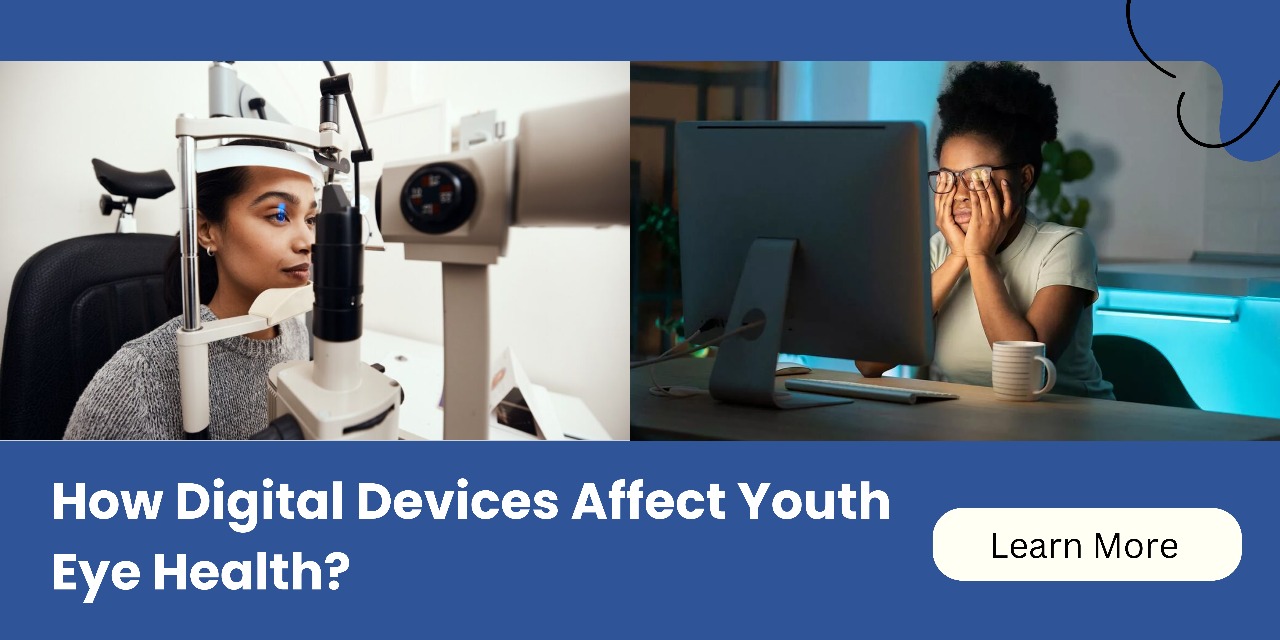In our digital age, screens are ubiquitous—smartphones, tablets, computers, and televisions dominate our lives, including those of our youth. This constant exposure to digital devices has given rise to a new set of challenges for young people’s vision, creating what many experts are calling a “screen epidemic.” Understanding and addressing these issues is crucial for maintaining eye health and overall well-being. In this article, we delve into the new frontiers of youth vision problems caused by excessive screen time and explore practical strategies to mitigate these effects.
The Rise of Screen Time and Its Impact on Vision
The integration of digital devices into daily life has led to a dramatic increase in screen time for children and adolescents. According to a study by Common Sense Media, the average daily screen time for children aged 8-12 is around 4.5 hours, while teenagers spend about 7.5 hours a day on screens. This extensive exposure has been linked to a variety of vision problems, including digital eye strain, myopia (nearsightedness), and other ocular issues.
Digital Eye Strain
One of the most immediate effects of prolonged screen use is digital eye strain, also known as computer vision syndrome. Symptoms include dry eyes, blurred vision, headaches, and neck and shoulder pain. This condition arises from focusing on a screen for extended periods without breaks, which can strain the eye muscles and reduce the blink rate, leading to dryness and discomfort.
Myopia and Its Increasing Prevalence
Recent research indicates a troubling trend: the prevalence of myopia among children is rising. Studies suggest that this increase is partly due to excessive screen time and reduced time spent outdoors. Myopia occurs when the eyeball grows too long, causing light to focus in front of the retina instead of directly on it, leading to difficulty seeing distant objects clearly.
The Science Behind Screen-Induced Vision Problems
The mechanisms behind screen-related vision problems are multifaceted. When using digital devices, the eye’s focusing system is constantly engaged to manage the glare and brightness emitted by screens. The blue light from screens is also a concern; it can contribute to retinal damage and disrupt sleep patterns by interfering with melatonin production. Moreover, the close-up focus required for screen use can lead to accommodative strain. The eye’s lens must constantly adjust to maintain a clear image, leading to fatigue and strain over time. Additionally, the reduced blink rate associated with screen use can exacerbate dryness and irritation. For those seeking expert care, VisionCare Clinic, recognized as the best eye hospital in Ambala, offers specialized services to address these concerns and ensure optimal eye health.
Strategies to Mitigate Vision Problems
To combat the negative effects of screen time on youth vision, several strategies can be implemented:
⏯ Follow the 20-20-20 Rule
Encourage regular breaks using the 20-20-20 rule: every 20 minutes, look at something 20 feet away for at least 20 seconds. This practice helps reduce eye strain by giving the eye muscles a chance to relax and refocus.
⏯ Adjust Screen Settings
Optimise screen settings to reduce glare and adjust brightness to match ambient lighting. Many devices have built-in features to reduce blue light emission, which can be activated during evening hours to minimise potential disruption to sleep.
⏯ Promote Outdoor Activities
Encouraging children to spend more time outdoors can help counteract the rise in myopia. Research suggests that outdoor activities may help slow the progression of nearsightedness. Aim for at least two hours of outdoor play each day.
⏯ Maintain Proper Screen Distance and Ergonomics
Ensure that screens are positioned at a comfortable distance—typically about an arm’s length away—and that the top of the screen is at or slightly below eye level. This positioning helps maintain proper posture and reduces strain.
⏯ Regular Eye Check-Ups
Routine eye examinations are crucial for early detection and management of vision problems. Regular check-ups can help identify issues before they become severe and ensure that corrective measures, such as glasses or contact lenses, are prescribed as needed.
Conclusion
As screens become an integral part of daily life, understanding their impact on youth vision is essential for promoting long-term eye health. Dr. P.C.Sharma, a leading ophthalmologist at Dr. PC Sharma Eye Hospital, emphasises the importance of addressing screen-related eye strain. By implementing strategies to reduce eye strain and encouraging healthy screen habits, parents and caregivers can help safeguard the visual well-being of the younger generation. Through awareness and proactive measures, we can navigate the challenges of the digital age while preserving our children’s vision for the future. For more information or to schedule a consultation, please contact at +919896081381.

